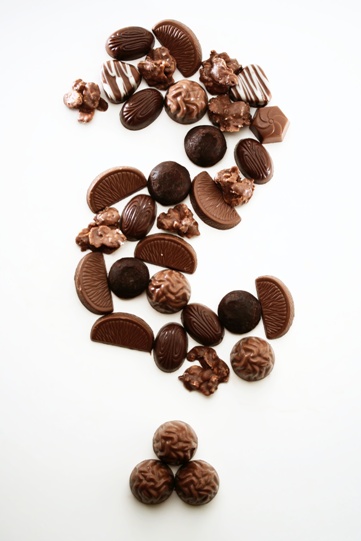Demystifying Chocolate
23 November 2009By Eric Stein, M.S., R.D.
 Cacao refers to the genus and beans; cocoa is the foundation of what we love.
Cacao refers to the genus and beans; cocoa is the foundation of what we love.
One of the oldest and most celebrated foods on the planet today, chocolate was so highly prized by ancient civilizations that is was used as a form of currency. Today, it is nearly impossible to find a dessert menu that does not feature at least one chocolate-based confection.
Consumers desire chocolate for reasons including its decadence, flavor and various health benefits. Chocolate comes from the genus-species theobroma cocoa, theobroma being derived from the Greek words for “god” and “food.” Cocoa is grown on almost 30,000 square miles worldwide, in mostly temperate climates between 20° North and 20° South of the equator. Notable cocoa-producing areas include Central and South America, Indonesia and Africa. The cocoa plant produces myriad different products, but before they become the delicious food known as chocolate, the cocoa beans must go through an involved process.
The seeds of the cacao tree have an intense bitter taste. One of the original foods made from cacao beans was an Aztec beverage known as xocolati, which literally translates to “bitter water.” The cacao beans must be fermented to develop their flavor. The fermentation process of cacao can last up to seven days. After fermentation, the beans are dried and roasted to help further develop their flavor. Once the beans have been roasted, the shells are removed from the cacao beans to produce cacao nibs. Grinding cacao nibs produces a liquefied version of chocolate known as chocolate liquor. When allowed to cool, this liquor solidifies and becomes what is known as cocoa mass. Cocoa mass is also sometimes referred to as bitter chocolate or baking chocolate. Chocolate liquor can be further processed into two components: cocoa solids and cocoa butter.
Once the cocoa solids and cocoa butter have been isolated, chocolate manufacturers can produce three types of chocolate: dark chocolate, milk chocolate and white chocolate. Dark chocolate is made from cocoa mass with additional cocoa butter, some sugar, a soy lecithin emulsifier and vanilla flavoring added. Milk chocolate is similar to dark chocolate, except that it has milk added in the form of condensed milk or dried milk powder. White chocolate, on the other hand, contains cocoa butter, milk solids and sugar, but no cocoa mass. Due to the lack of cocoa solids, white chocolate cannot truly be categorized as chocolate.
The manufacturing of chocolate involves a process known as conching, in which the ingredients for chocolate are kneaded together using heavy rollers. Conching is the most important step in making chocolate because it helps to further develop the chocolate’s flavor, as well as ensure that fats and sugars are evenly distributed. The conching process also creates smaller cocoa and sugar particles in the chocolate, ensuring a product that melts more smoothly. Once the chocolate has been conched, it can then be tempered to create a stable, usable form of chocolate.
A major reason most people consume chocolate is because it creates a pleasurable experience due to its role in the release of serotonin in the brain. In addition to its feel-good effect, there are many potential health benefits from eating chocolate due to its high antioxidant content. Benefits include anticancer effect, brain stimulation, cough suppressant and increased digestion. Although one of the most notable benefits of chocolate is its reputation as an aphrodisiac, scientific research has not yet been able to identify the exact reason.
Whatever the reason, chocolate is one food that has lasted the test of time and continues to grow in popularity worldwide. When eaten “out of hand,” chocolate bars and other candies are popular delights for holidays such as Christmas, Easter, Valentine’s Day and Halloween, while rich desserts such as chocolate cakes, tortes, truffles and mousses continue to be best-sellers on many restaurant menus.
Eric Stein, M.S., R.D., is a chef-instructor in the College of Culinary Arts at Johnson & Wales University, Denver.
Photo caption: ©Veronika Sussmannova. http://www.dreamstime.com/free-stock-photo-chocolate-question-mark-rimagefree3430768-resi1793763
